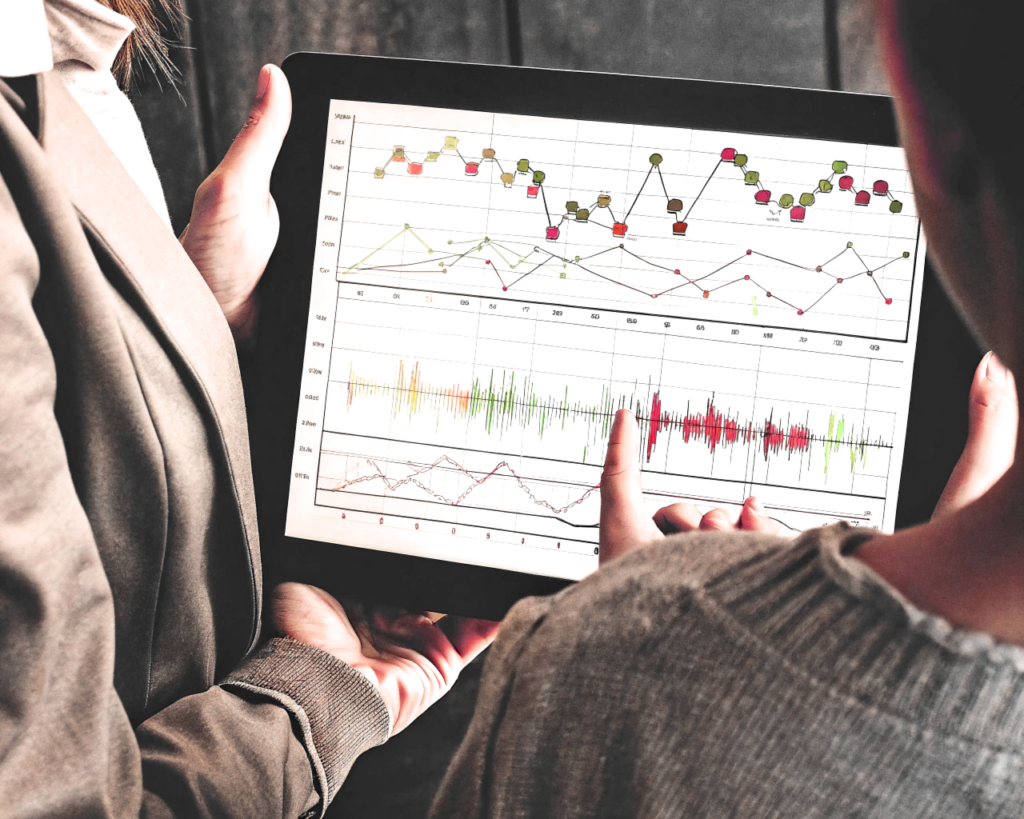Best Indices to Trade When Volatility Is the Only Constant

When the market is volatile, the veterans would look at the indices as compartments of opportunity. An index offers concentrated trade into an entire sector or economy balanced off exposure against risk in ways that may not happen with a single stock. Such a guide discusses the most favored indices to trade in volatility conditions along with some strategic insights on trade bearing those difficult spells.
Key Concepts Behind Index Trading
What Are Indices and How Do They Work?
An index is, by definition, an average of a certain number of representative stocks from a given sector of stocks, regions, or exchanges; for example, the S&P 500 or DAX 40 serve to provide a face to how its underlying stock performs, which indirectly gives traders something to measure market sentiment up against.
Traders do not deal directly with indices like they would with stocks but would rather look into obtaining trade price directions that result from movements of these indices, generally through financial instruments like CFDs, ETFs, or futures. Such tickers thereby represent the pulse of movement of the indices for the economy in general and are thus integral for any mode of trading based on volatility.
Index CFDs, ETFs, and Futures Explained
- CFDs (Contracts for Difference) allow speculation on index price movements without owning the underlying assets. They offer leverage and are popular for short-term trades.
- ETFs (Exchange-Traded Funds) track index performance and can be held in portfolios like stocks.
- Futures Contracts are standardized agreements to buy/sell an index at a future date, typically used by institutions for hedging or speculation.
| Instrument | Best For | Trading Hours | Leverage | Ownership |
| CFDs | Short-term traders | Extended | High | No |
| ETFs | Long-term investors | Market hours | Low | Yes |
| Futures | Advanced traders/hedging | 24h (most) | High | No |
The Role of Volatility in Index Selection
Volatility directly impacts the potential for profit—and risk. Some indices, like Nasdaq 100, react sharply to earnings or tech-sector sentiment, while others like FTSE 100 tend to be more stable. Understanding an index’s volatility profile helps determine suitability for intraday vs. swing trading.
Why Indices Are Popular Among Volatility Traders
Liquidity and Tight Spreads
Major indices often have high liquidity, leading to tighter spreads and reduced slippage. This is crucial during volatile periods, where seconds and pips can define profitability.
Diversification in a Single Instrument
Rather than betting on one stock, trading indices gives exposure to broad market segments. This diversification helps mitigate company-specific risks while still capitalizing on macro movements.
Intraday and Swing Opportunities
Volatile indices generate significant intraday price action, ideal for short-term strategies. Others, with more structured patterns, suit swing or position trading based on macro trends.
Economic Data and News Impact
Indices often respond immediately to data releases like NFP, CPI, or central bank decisions, making them excellent vehicles for event-driven trading.
Best Indices to Trade During High Volatility
1. S&P 500 – U.S. Market Barometer
A broad, sector-diverse index of 500 major U.S. companies. It responds to macroeconomic data and U.S. fiscal policy, offering both liquidity and tradability.
2. Nasdaq 100 – Tech-Sector Sensitivity
Heavy in growth and tech stocks, the Nasdaq 100 often exhibits higher beta, making it ideal for volatility-driven momentum strategies.
3. Dow Jones Industrial Average – Blue Chip Focus
Composed of 30 large-cap U.S. companies, it trades with less volatility than the Nasdaq, but reacts strongly to shifts in industrial or financial sectors.
4. DAX 40 – Germany’s Economic Pulse
One of Europe’s most volatile indices, the DAX responds to EU data, global export trends, and ECB policy decisions.
5. FTSE 100 – UK Market Leader
More stable than U.S. indices, yet sensitive to Brexit-related developments, UK inflation, and BoE guidance.
6. Hang Seng Index – Asia’s Volatile Gateway
Heavily influenced by Chinese regulatory shifts, tech stock swings, and geopolitical factors in East Asia.
7. Nikkei 225 – Japan’s Reactionary Index
Known for price gaps around Tokyo’s open and driven by yen strength, BoJ policy, and export dynamics.
8. Euro Stoxx 50 – Eurozone Exposure
Tracks 50 top Eurozone companies and reacts to ECB policy, energy prices, and European growth data.
Index Performance in Volatile Conditions
Historical Volatility Patterns
Indices tend to spike in volatility during crises or uncertainty, such as the COVID-19 crash or global inflationary periods. Historical patterns help define expected risk and reward.
Correlation with VIX and Global Events
The VIX index often inversely correlates with U.S. indices. Understanding this relationship can enhance timing and hedging strategies.
Earnings Season and Policy Shocks Impact
During earnings season, sector-heavy indices like the Nasdaq may see daily gaps. Likewise, policy announcements from the Fed or ECB can spark multi-day momentum.
How to Trade Indices in Volatile Markets
Choosing the Right Index for Your Strategy
Select an index that aligns with your trading timeframe, volatility tolerance, and sector bias. Tech-focused traders may prefer Nasdaq; macro traders may choose S&P or Euro Stoxx.
Using CFDs for Flexibility
CFDs allow going long or short quickly, ideal in fast-moving markets. Their leverage, however, demands careful margin and risk control.
Technical and Fundamental Analysis Tools
- MACD, RSI, Fibonacci levels for timing entries/exits
- Earnings calendars, CPI releases, and central bank minutes for macro context
Risk Management Tactics in Fast Markets
- Use tight stop-losses and trailing stops
- Set maximum daily drawdown limits
- Avoid overleveraging during extreme volatility
Trading During Economic Announcements
High-impact events like NFP or FOMC decisions create rapid moves. Many traders prefer fade strategies or breakout entries post-news spike.
Best Times to Trade Indices
Market Opening Hours and Sessions
- London open (8:00 GMT): DAX, FTSE
- New York open (13:30 GMT): S&P 500, Nasdaq
- Tokyo open (00:00 GMT): Nikkei, Hang Seng
Overlapping Sessions and Volume Peaks
Overlaps like London–New York (12:00–16:00 GMT) offer the most volume and volatility.
News Releases and Earnings Calls Timing
Pre- and post-news windows often show sharp whipsaws, requiring disciplined execution and quick decision-making.
Advanced Tips for Index Traders
Hedging with Indices in Volatile Portfolios
Indices can offset long equity or commodity positions. Traders may short Nasdaq to hedge tech exposure, or long DAX during EU uncertainty.
Leveraged Trading – Pros and Pitfalls
While leverage boosts returns, it equally amplifies losses. Use it strategically and always calculate your risk-reward.
Sentiment Tracking and Economic Calendars
Monitor:
- COT reports
- Fear & Greed Index
- Central bank schedules
- Geopolitical risk updates
FAQs on Best Indices to Trade
Which index is best for intraday volatility?
The Nasdaq 100 is known for sharp intraday movements, making it a favorite for momentum traders.
Can I trade indices during off-market hours?
Yes, via CFDs or futures. However, spreads may widen and liquidity may drop during non-peak hours.
Are indices safer than individual stocks during volatility?
Generally, yes. Indices spread risk across multiple stocks, reducing single-company shock impact.
What are the most volatile indices historically?
The Nasdaq 100, Hang Seng, and DAX 40 have shown high historical volatility.
Do geopolitical events affect all indices equally?
No. Regional indices like Nikkei 225 or Hang Seng react more to local politics than global indices like the S&P 500.
Final Thoughts: Navigating Volatile Markets with Indices
Indices afford the trader great liquidity, depth, and flexibility in unpredictable markets. The knowledge of what index to go after, and when, is the key to keeping performance afloat in highly volatile conditions, be it intraday breakouts or hedging of macro exposure. Remember to live by the rules, stay in tune with the markets, and make volatility your ally!
